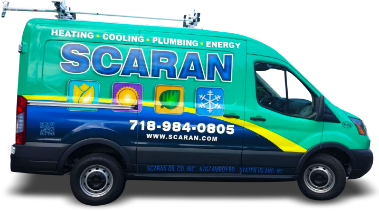If you’re considering an HVAC upgrade, a dual fuel system should be at the top of your list. It’s the best of both the air conditioning and heating worlds, and we will explain why below.
If you are interested in a dual fuel HVAC system in Edison, NJ, give our team a call. We can complete an in-home assessment to outline how the system would work in your home, as well as offering a quote and going over the installation process. Keep reading to learn more about the benefits of a dual fuel HVAC system compared to your other options.
What Is a Dual-Fuel System?
A dual fuel system is a HVAC system that uses a heat pump for primary heating and cooling. It also has a small add-on furnace to provide additional heat when it gets very cold in winter. We often install small add-on furnaces to heat pumps because, while heat pumps are excellent at cooling, they may not be able to get your home quite as warm as you like in the winter.
Benefits of a Heat Pump
You may be wondering, why not just install a separate air conditioner and heater? Well, a heat pump offers several benefits over a traditional air conditioner and heater. The first benefit is that having a heat pump saves you space because you don’t have to have a separate furnace installed in your home. Even with a small add-on furnace, it’s not taking up as much space as a larger furnace would.
Another benefit is that the heating provided by a heat pump is much safer than heat that is produced with either a gas or electric furnace. A gas furnace has a flame that is used to create heat, while an electric furnace has heating elements that warm up to create heat. Both of these pose additional hazards even though all residential whole-house heating systems are highly safe, especially when you keep up with annual maintenance to check on the operation of your system regularly.
A heat pump is safer because a heat pump uses the refrigerant lines in the reverse method of cooling. Instead of transferring heat from inside of your home outside to cool the air, it absorbs heat from the outside and transfers it into your home. Even when it’s cold outside, there is still some heat in the air. The problem with heating arises when there are days that are below freezing and periods of time that stay extremely cold for days or weeks at a time. That’s where an add-on furnace comes in.
How an Add-On Furnace Works
An add-on furnace gets installed similarly to how a furnace is installed alongside a central air conditioner. Both the heat pump and the furnace attach to your home’s thermostat when temperatures dips so low that your heat pump cannot produce the heat based on your thermostat settings, your small furnace will kick on to make up the difference. When it is no longer needed, your small furnace will turn back off again until temperatures dip low.
Contact Scaran today to schedule an appointment for a dual fuel system installation with our professionals.












